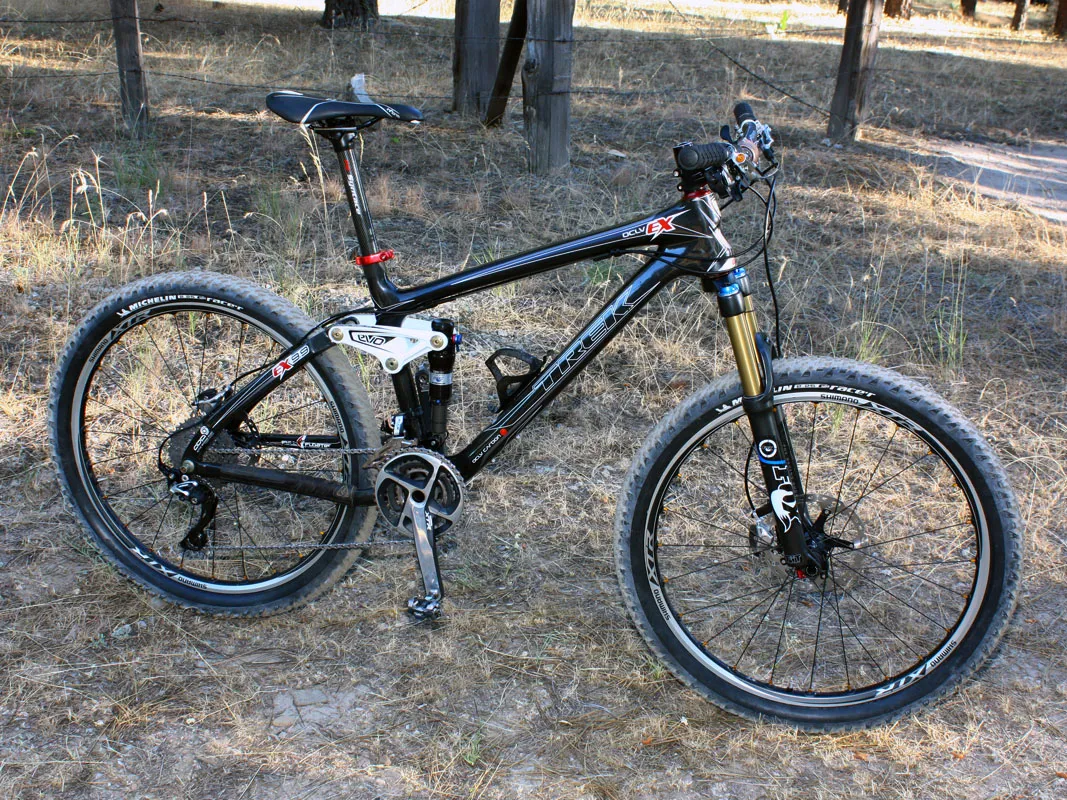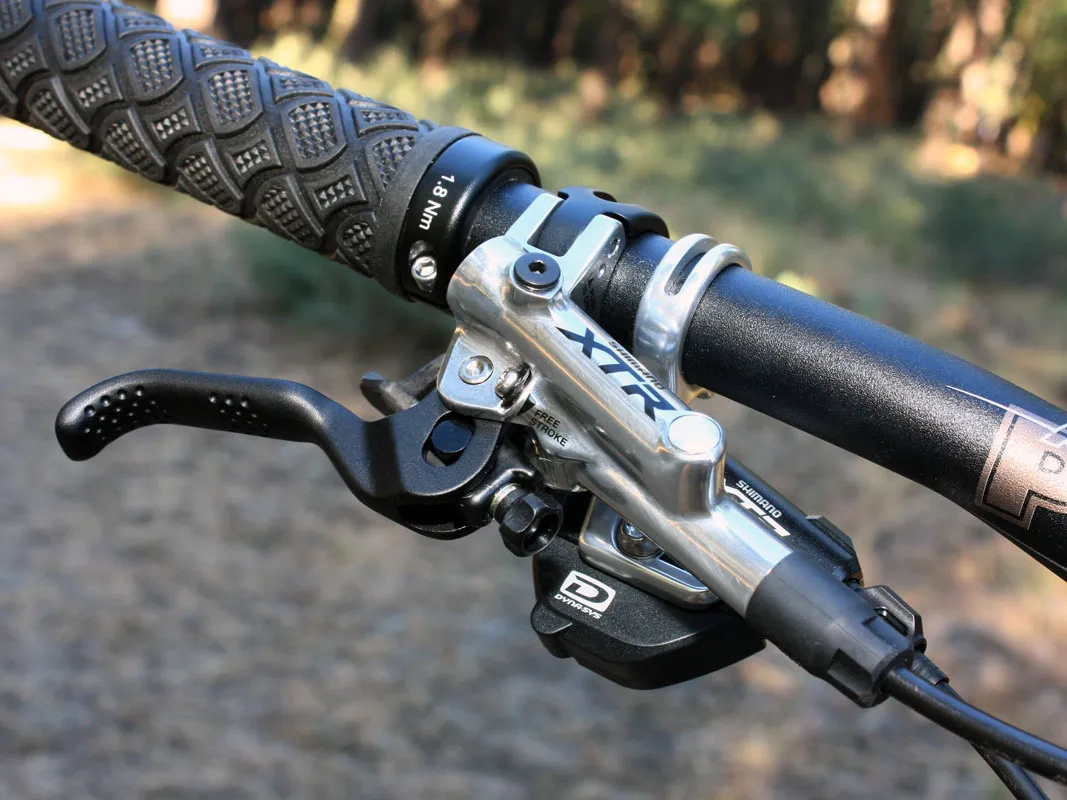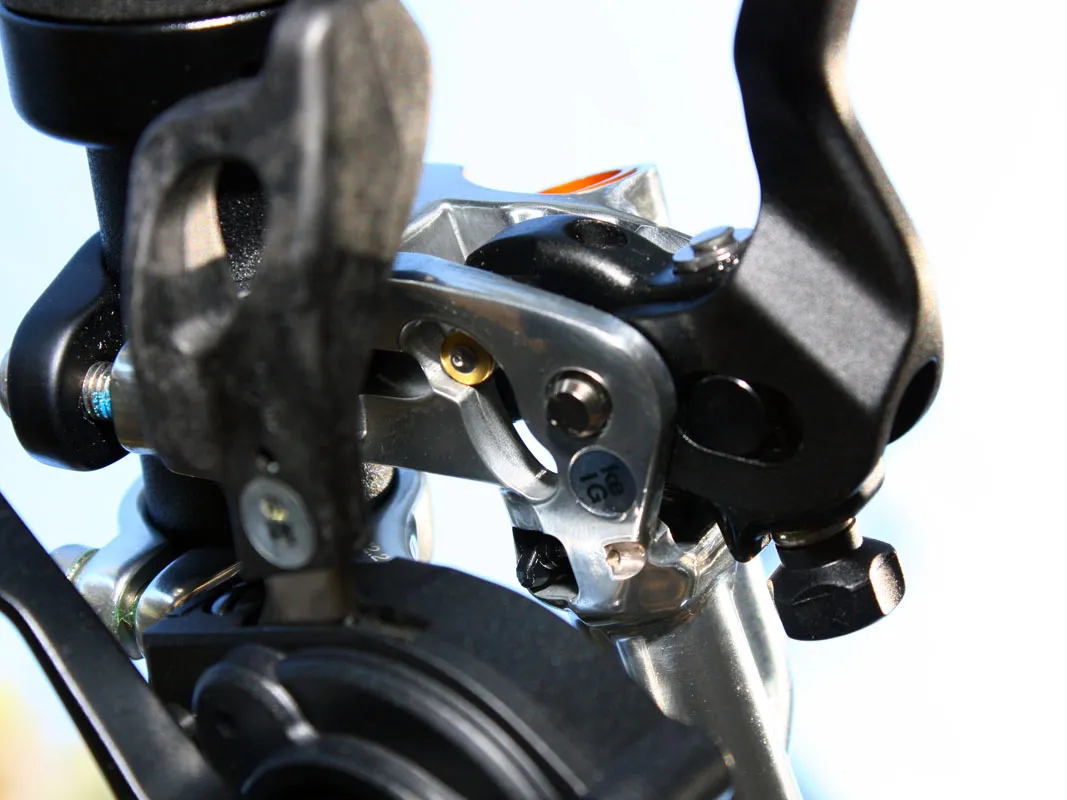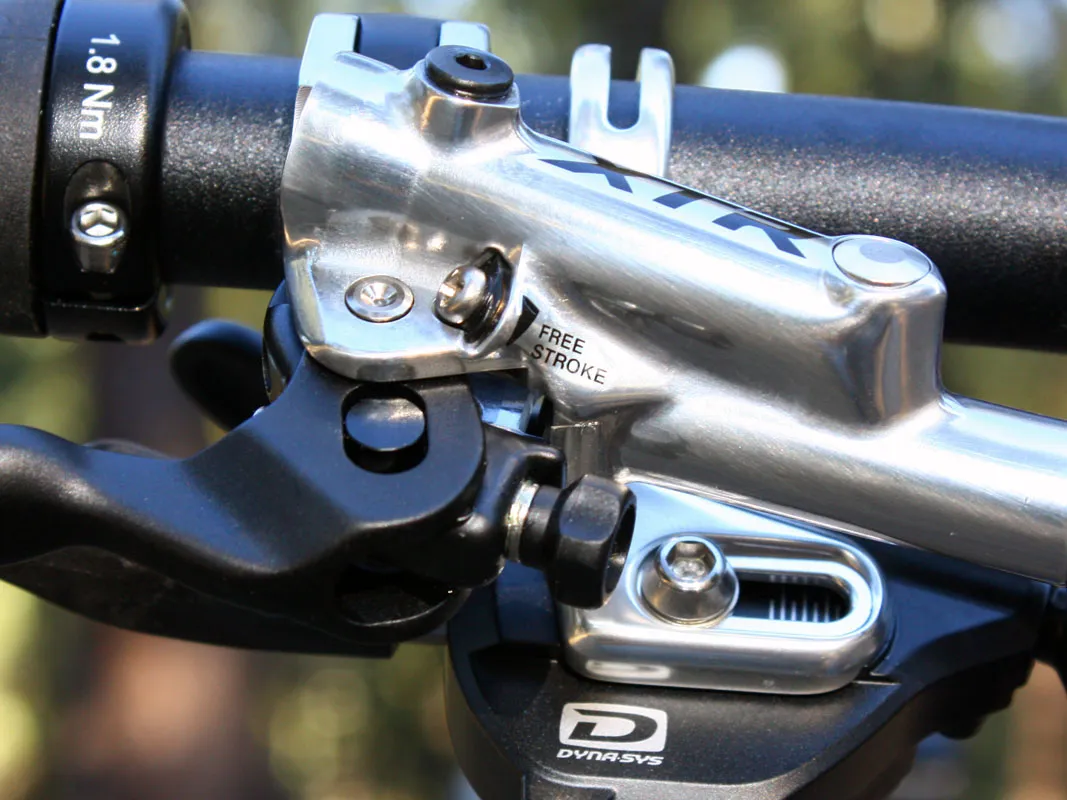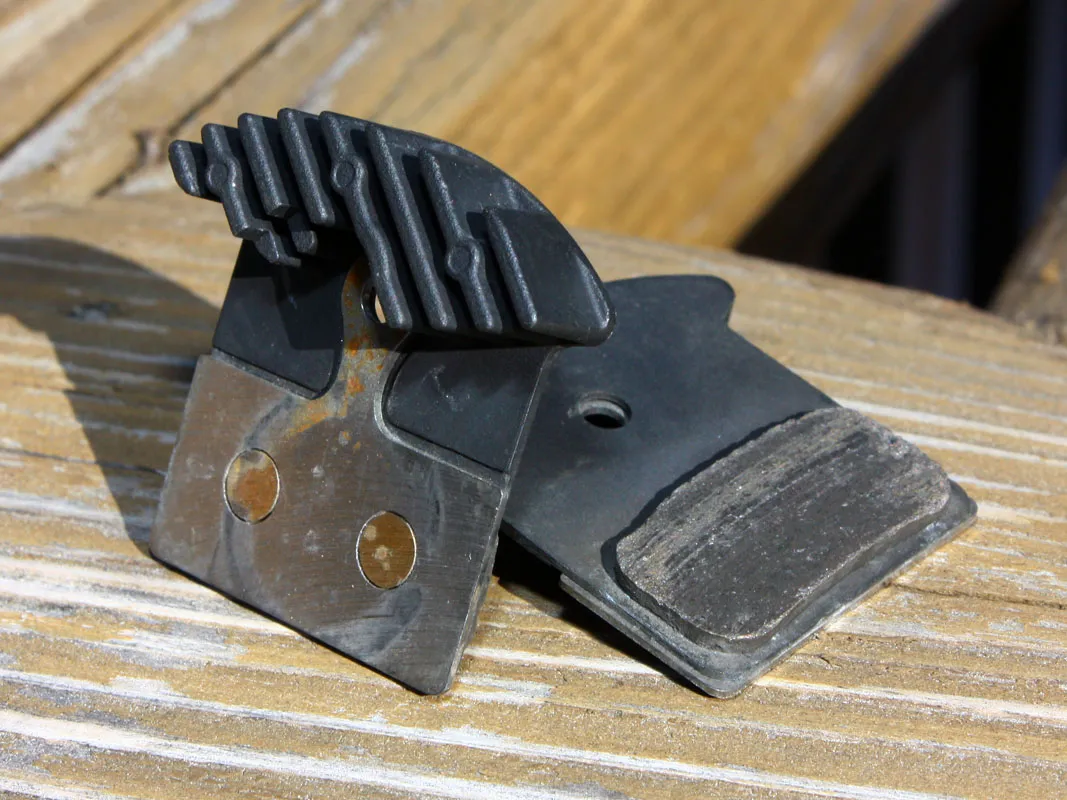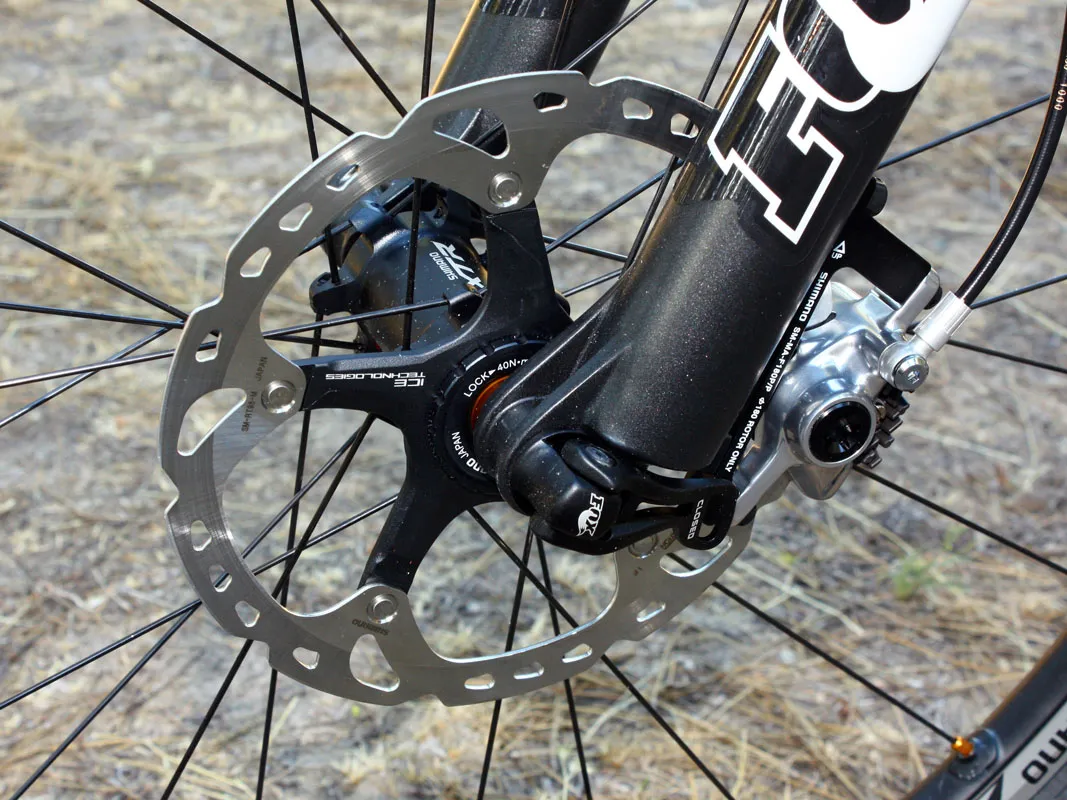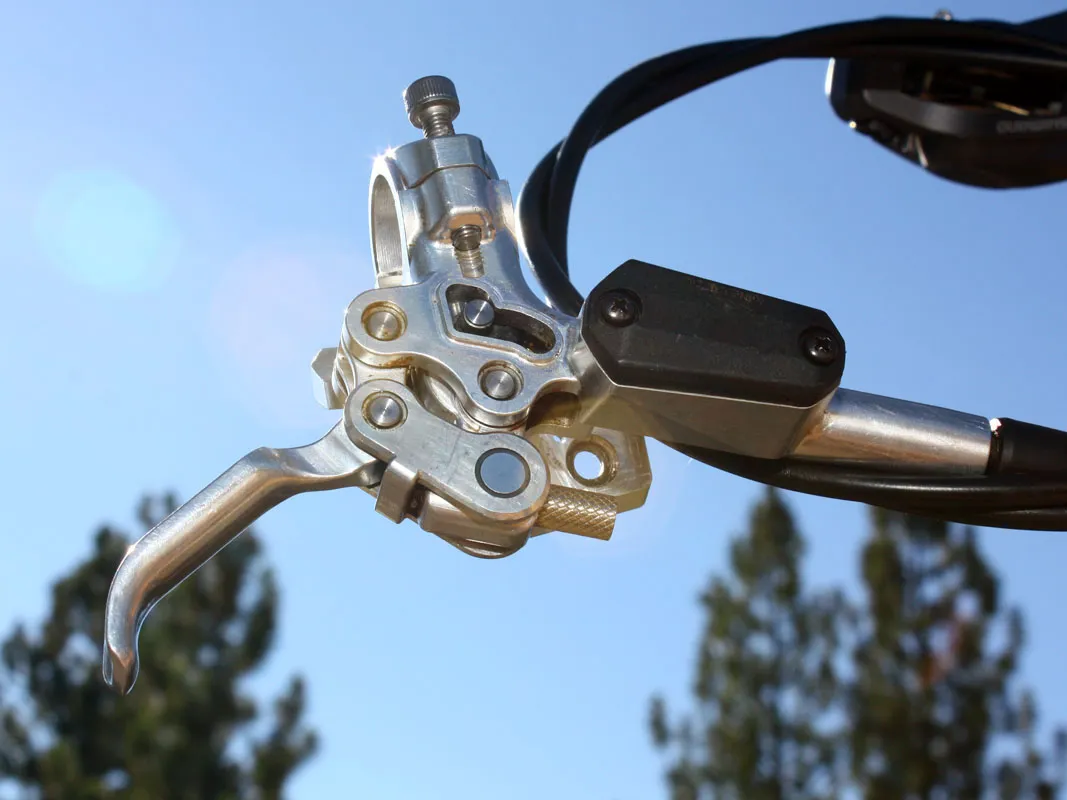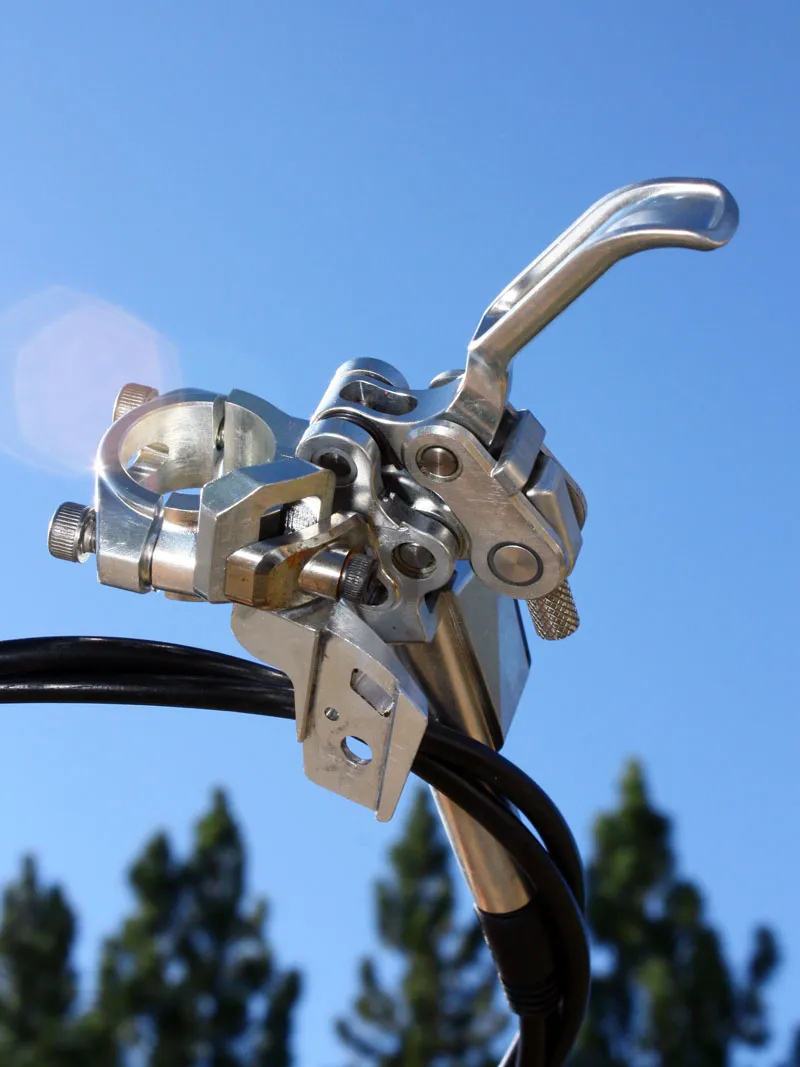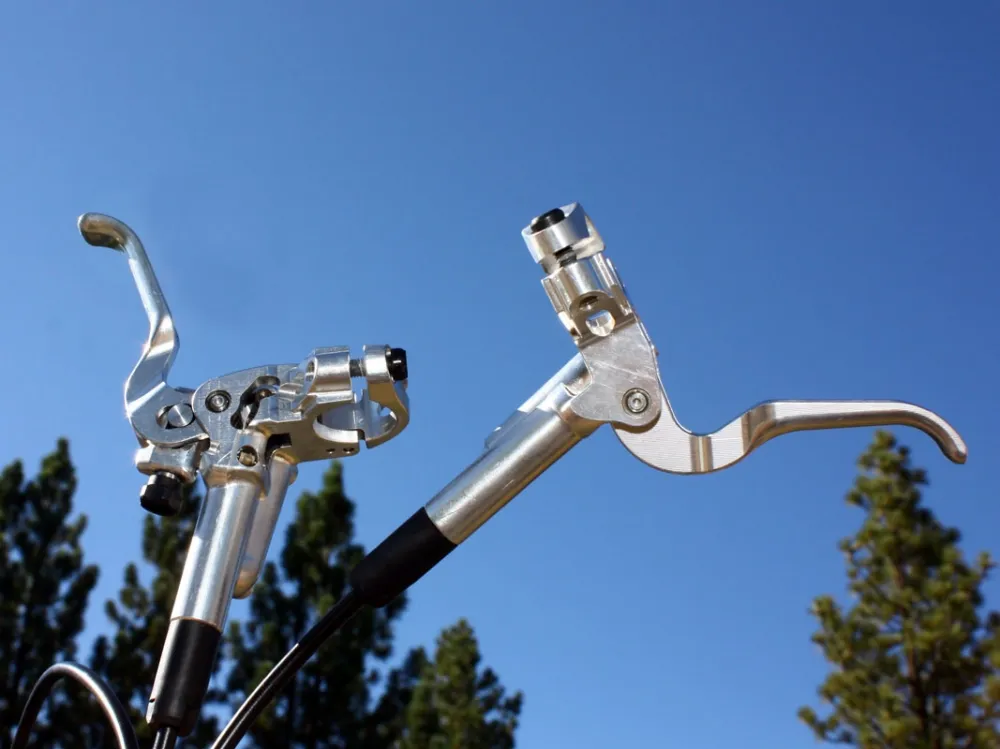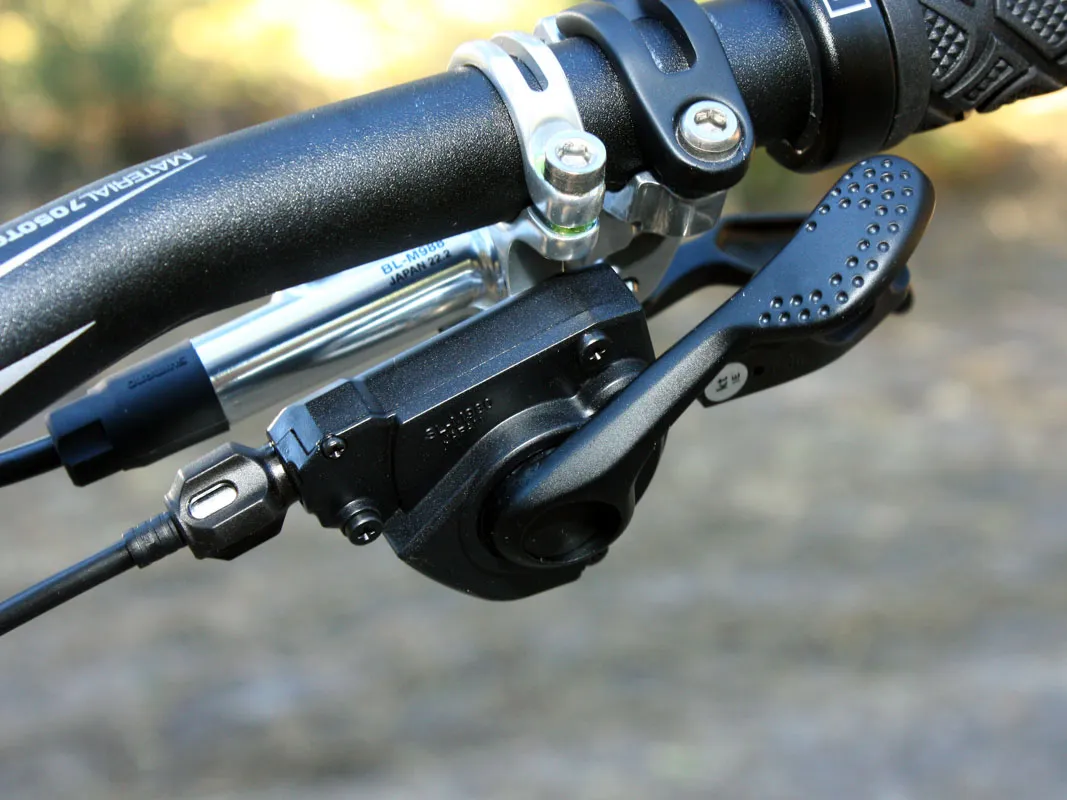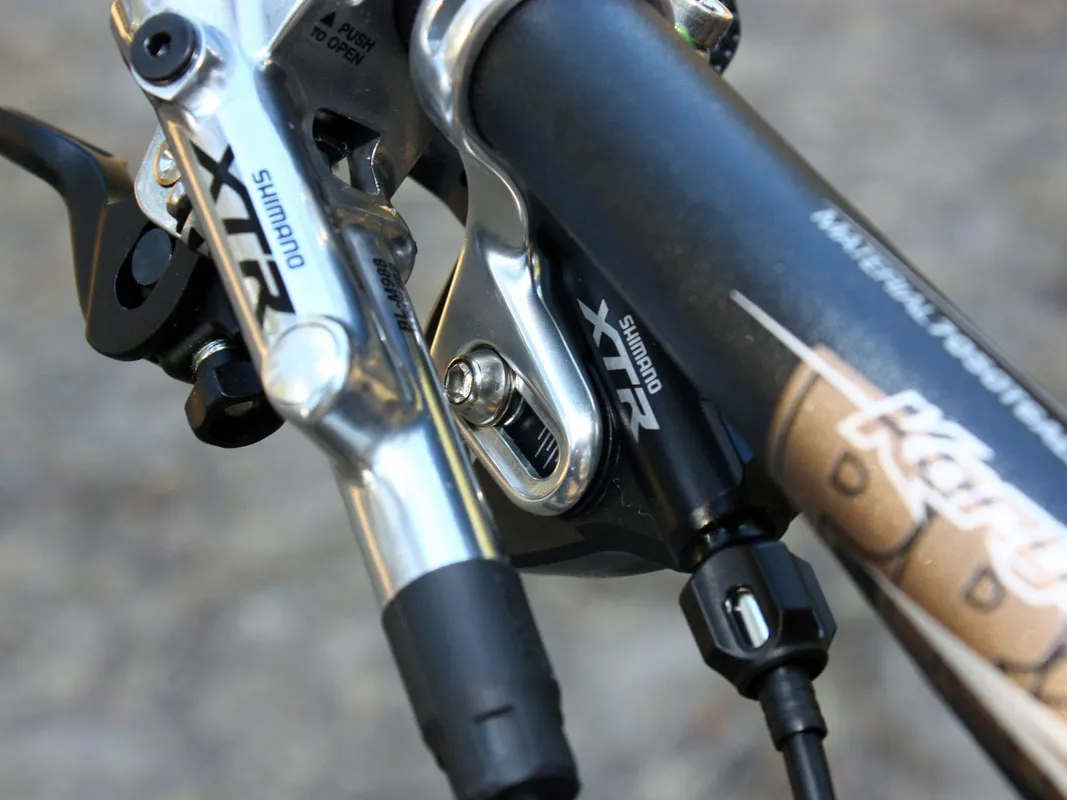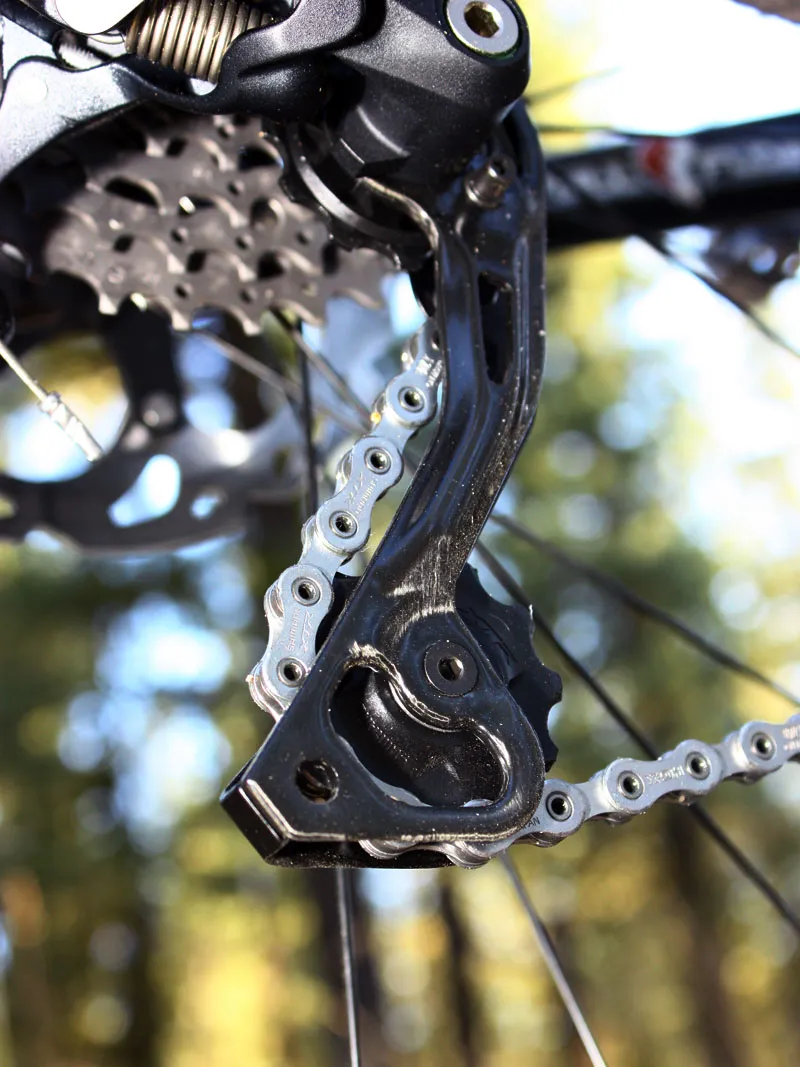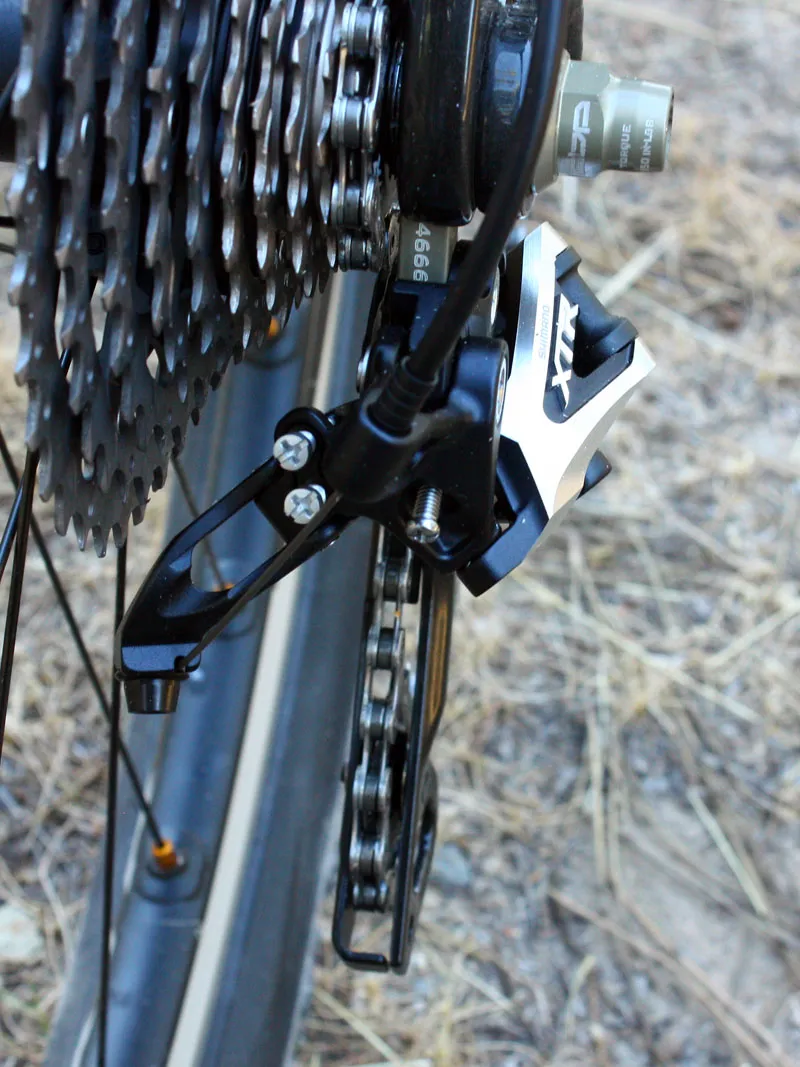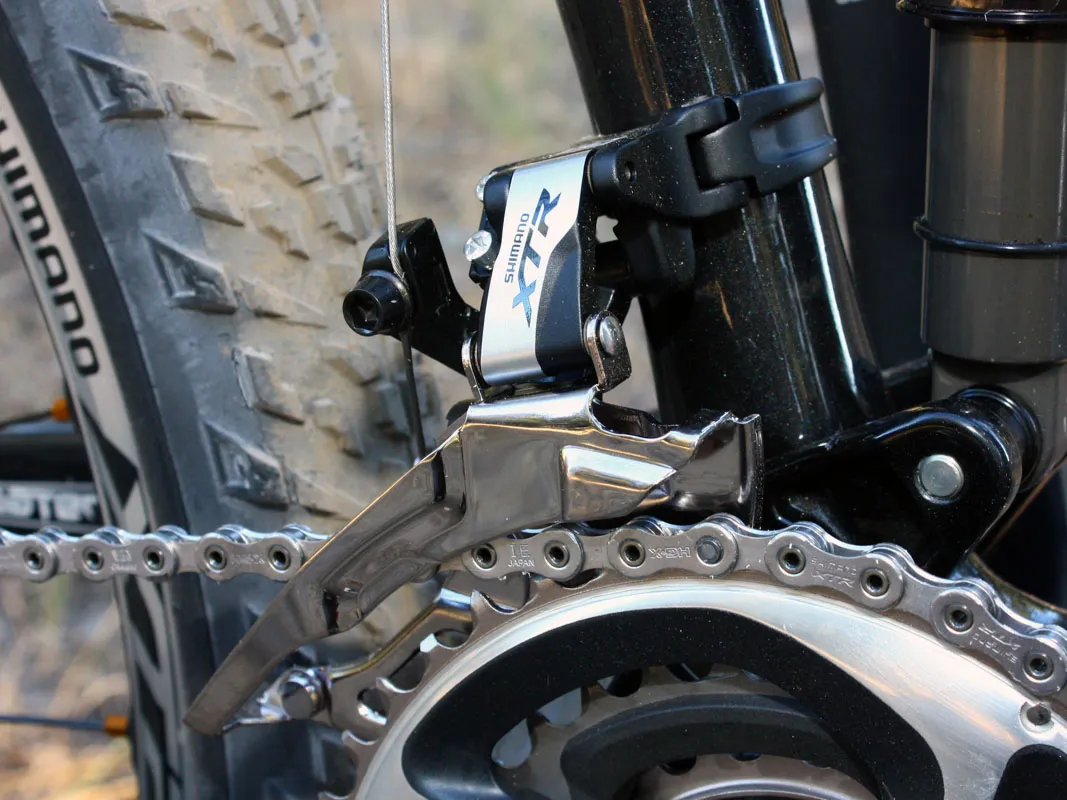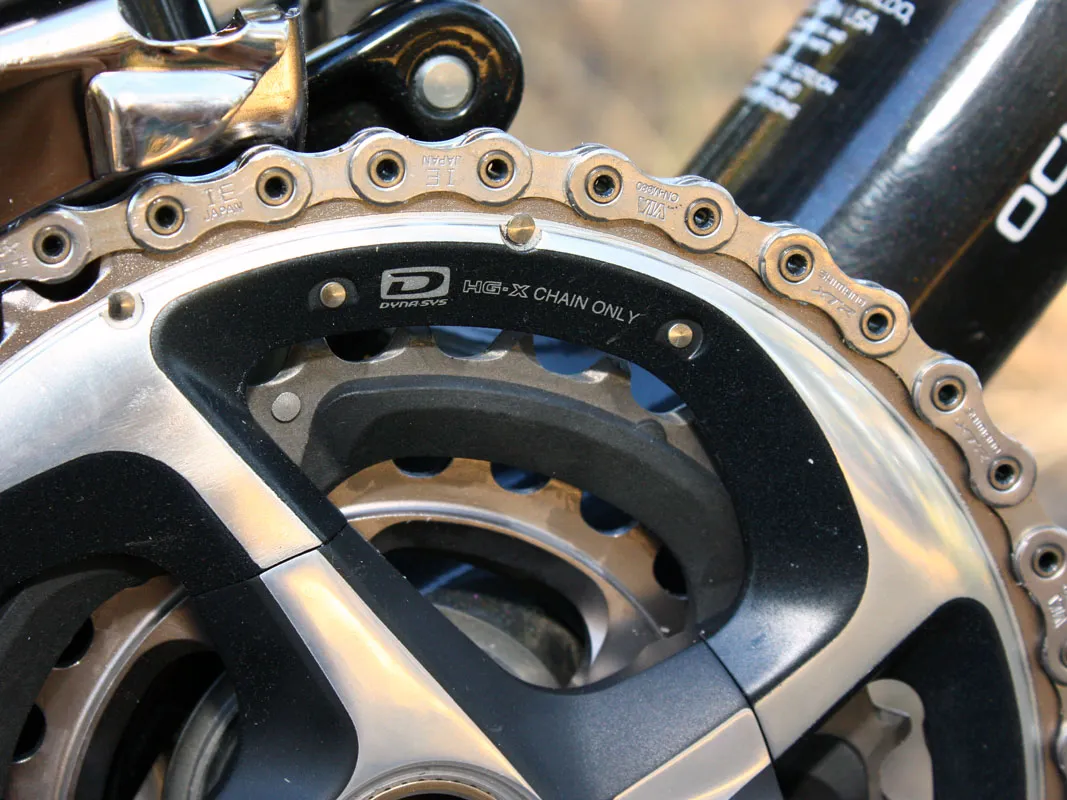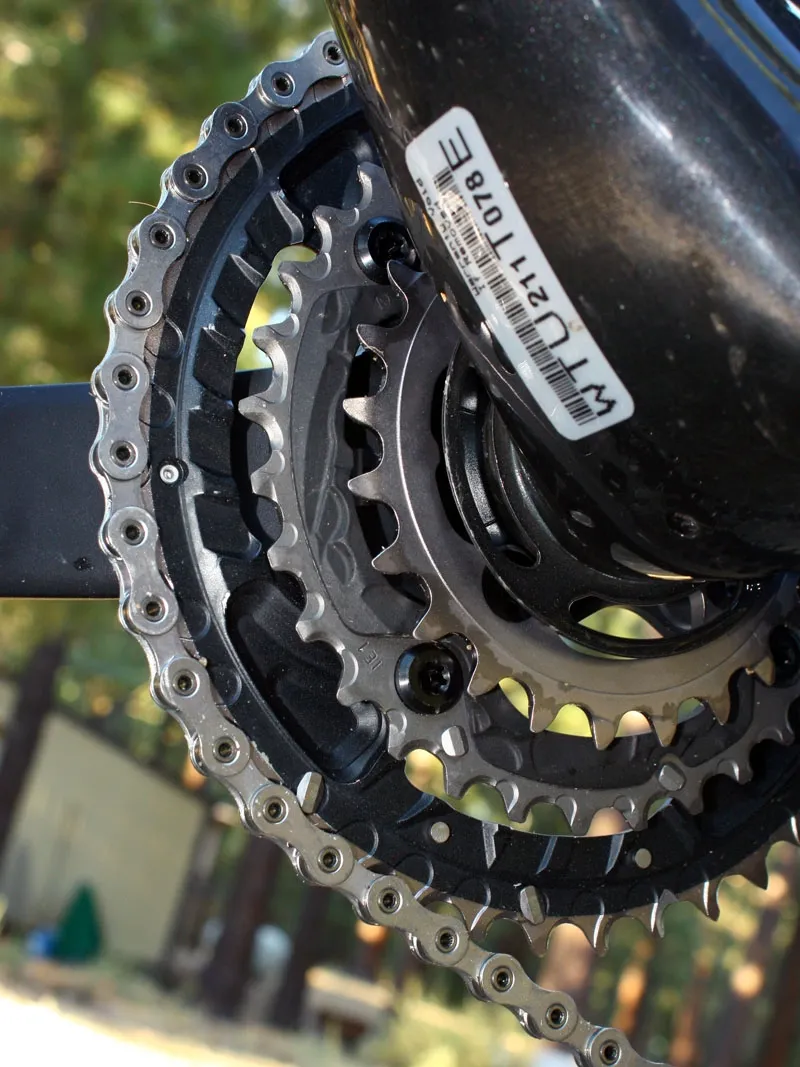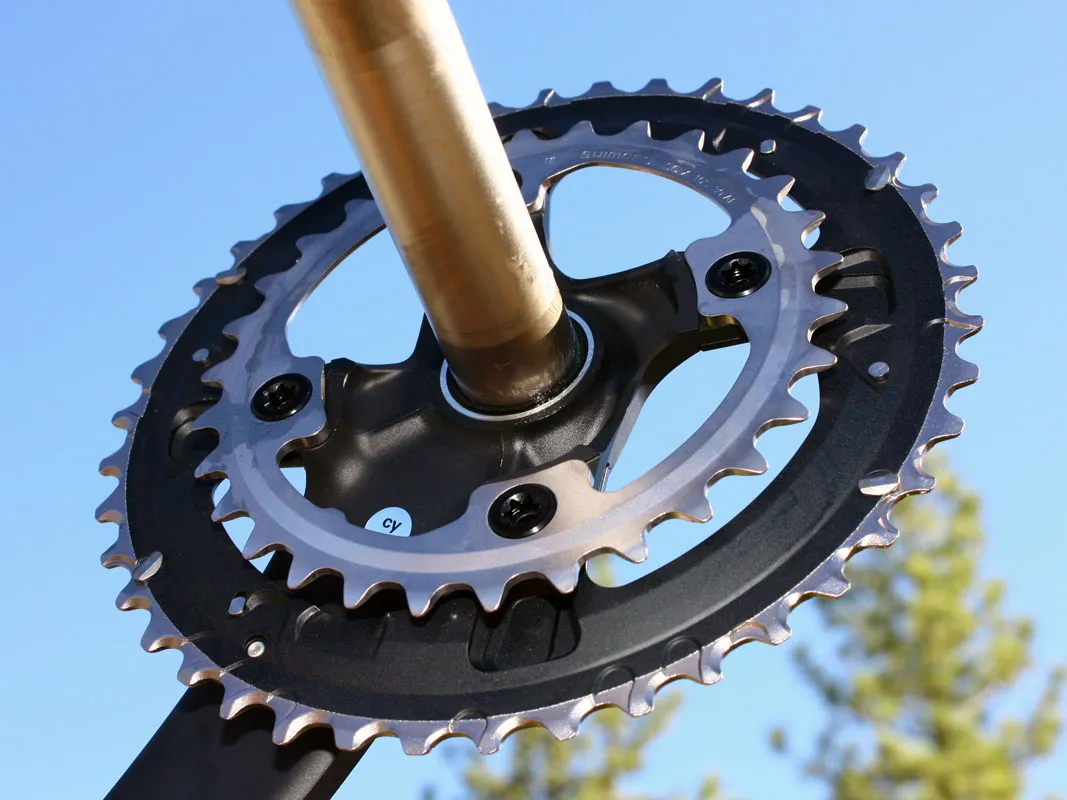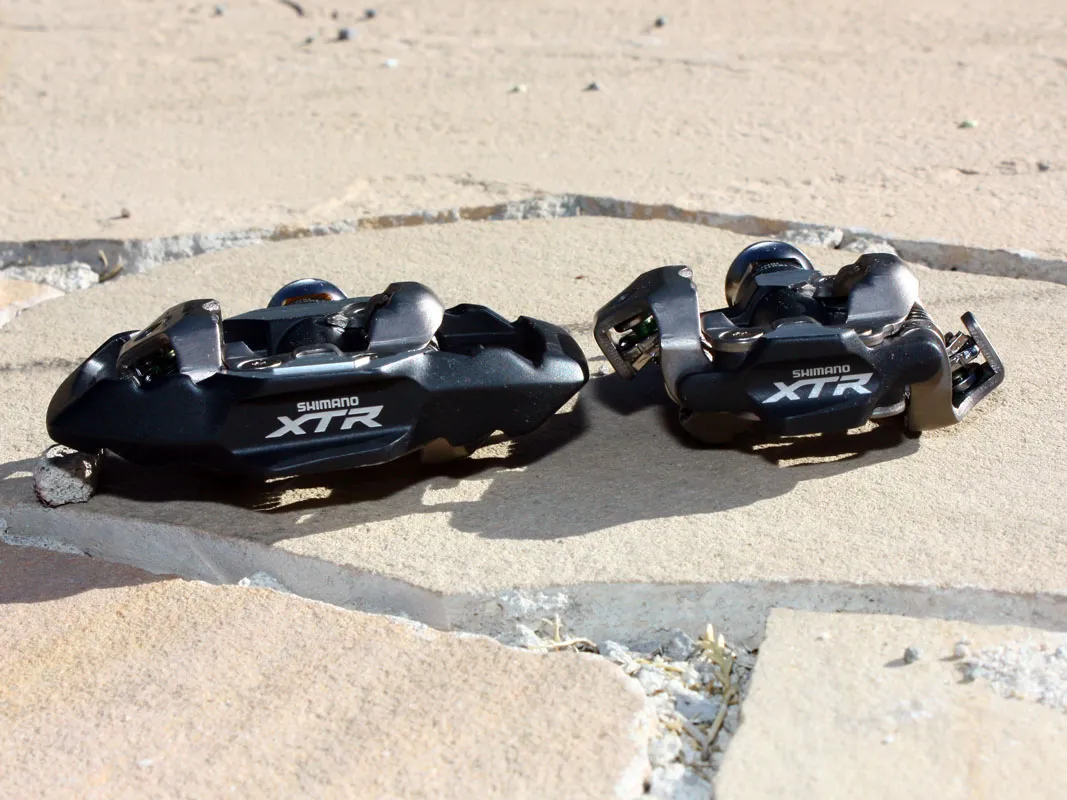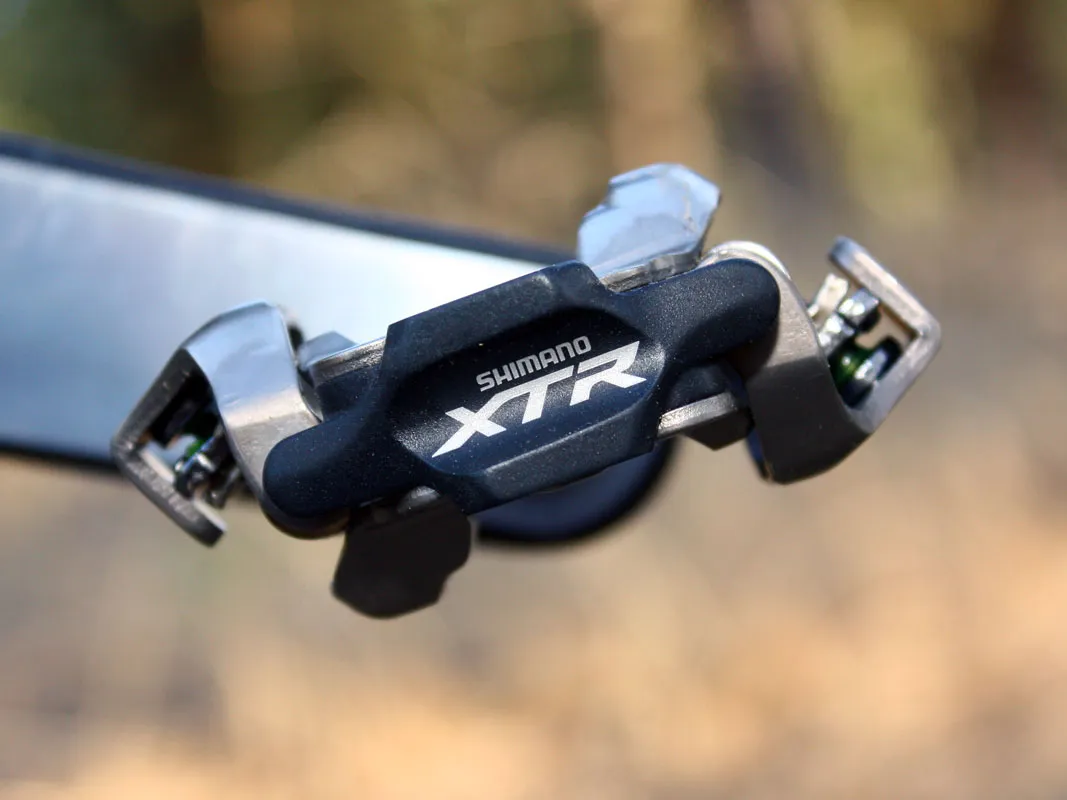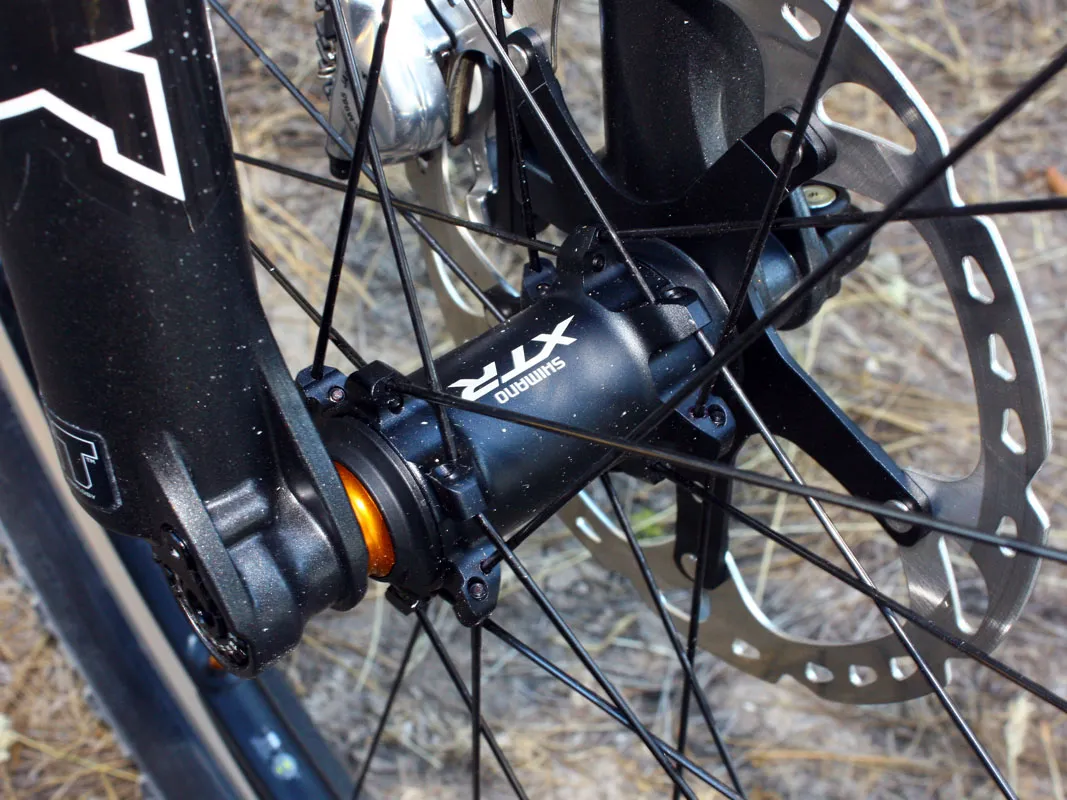Since its unveiling in June, Shimano's new XTR M980 flagship mountain bike groupset has been little more than a bunch of studio glamour shots, a collection of whiz-bang new features, and a list of facts and figures.
But we've now been able to take the more trail-orientated bits (there's a race-targeted variant coming a little later) out for an initial thrashing around the spectacular Lakes Basin network of trails overlooking Graeagle, California, plus a top-to-bottom, 1,480m (4,850ft) high-speed run down a blown-out Downieville Classic downhill course.
So what's our initial conclusion? As expected, M980 is an impressively refined and thoroughly engineered piece of kit, and while it definitely addresses the shortcomings of the prior generation, even we didn't expect just how much better it would end up.
Brakes: More power, superb control, tighter look and feel
XTR M970 brakes were a benchmark for modulation but what they boasted in control, they notably lacked in brute force, with even the larger rotor options failing to deliver enough power for more demanding situations. With M980 Trail, however, Shimano claim a 25 percent increase in absolute braking power (the Race version gets a more modest 10 percent bump) and it feels like every bit of that on the dirt.
Whereas before you were occasionally grabbing the levers for dear life hoping to scrub off enough speed, even hard braking is now easily done with a single finger and we never felt the need for anything bigger than our 180/160mm front/rear rotor setup – even at Downieville where our max speed topped 55km/h (35mph) – nor did we experience any fade.
We did have to stop a few times during the run to wait for slower members of the group (during which time the brakes cooled off) but even so, some of the credit for the fade resistance must go to Shimano's Ice Tech features. Cooling fins are integrated into the backing plates on our Trail-edition pads and the three-layer, two-piece spidered rotors include a layer of aluminium sandwiched between two outer sheets of stainless steel – all in the name of dissipating heat.
Though it's hard to say exactly how well it works under more rigorous testing conditions (we've already got our long-term test group in hand and will have plenty of opportunity to do fade testing back in Colorado), Shimano engineers claim up to a 100°C reduction in surface temperatures relative to a standard stainless rotor.

Trail edition XTR M980 brakes get finned pads and three-layer rotors
More impressive is that the additional power hasn't come at the expense of the predecessor's outstanding modulation and though M980 has far better initial bite, it still isn't objectionably grabby, at least with the resin pad compounds (we'll sample the new metal compounds a little later).
Key to our Trail version's performance is the Servo Wave variable-rate master cylinder design, which provided a quick and definitive pad contact point but then ramped up the leverage ratio for more power and just a bit of 'squish' at the lever, compared to the firmer feel of main competitors Avid.
New, oversized calliper pistons place more even pressure on the pads, and a swap to full-ceramic construction (older ones were aluminium cups with even smaller phenolic inserts in the centre) adds further heat resistance to the system – not to mention better temperature stability for reportedly more consistent pad retraction in a wide range of environments. Shimano have even given XTR M980 a new hydraulic hose with a smaller internal bore but larger barb inserts for reduced power loss.

The new brakes use bigger ceramic pistons that can apply force more evenly to the pads
The more compact layout ditches the old radial master cylinder architecture for a unique double-barreled inline setup that offers much improved ergonomics and a main pivot point moved closer to the bar for a more natural-feeling arc (yes, Avid, you were right all along). The blade itself is surprisingly short and ideally shaped for one-finger braking – but still suited for two-finger use depending on positioning – and also 14mm wide (13mm on the Race version). Machined-in dimples on the blade surface are notably effective at improving finger grip.
Our Trail-edition brake levers also featured tool-free reach adjust and a tunable pad contact point. As before, the 'Free Stroke' pad contact adjustment range is on the narrow side and still requires a Phillips head screwdriver but the reach adjustment range is enormous. At the closest setting the lever nearly bottoms on the bar before the pads contact while our large-sized hands could barely reach the lever at the other end – impressive.
Final details include hinged clamps (finally!) and an easier bleed procedure, but riders who run their brakes UK/moto-style (front brake lever on right-hand side of the handlebar) should note the fact that XTR M980 levers still can't be swapped left-to-right without having to disconnect the hoses.
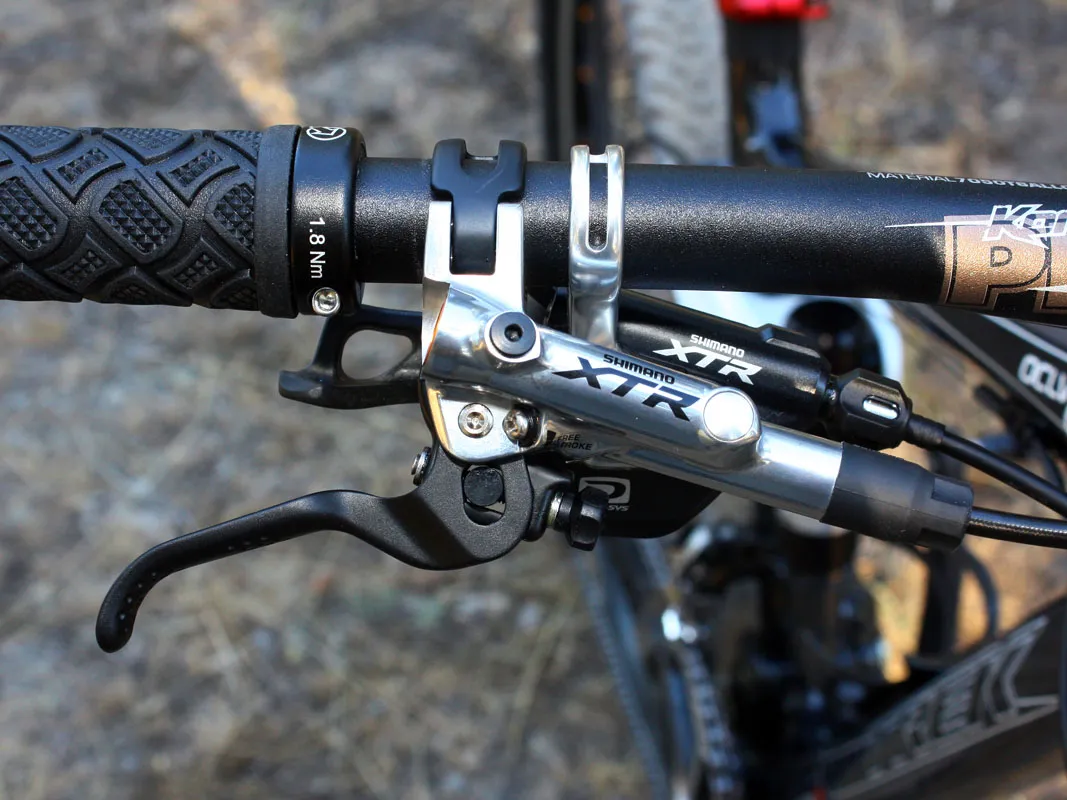
XTR brake levers are now shorter for natural one-finger braking
Shifting: Speedier and smoother with best-in-industry refinement
Put aside fears of sloppier or more finicky rear shifting with the move to 10-speed as even Shimano's own Dura-Ace mechanical road group can only dream of being half this good. If we had our eyes closed and weren't counting, not only would we not have guessed that the cog spacing was tighter but we'd even say that M980 feels tighter, more precise and smoother under power than the previous nine-speed setup (at least when covered in layers of Northern California moon dust – we'll let you know how heavy mud affects things later).
Key to the improved rear shift performance is a new cable pull ratio that reduces line tension and is more tolerant of slight maladjustments and housing friction. Shimano say it's just a 20-30 percent increase so it's not quite as dramatic as SRAM's 1:1 setup, but combined with the rear derailleur's longer and more linear return spring, it still makes for a notably snappier and less vague feel overall plus better performance on bikes that run full housing. This is especially true when you move the chain into the outermost cogs where M970 could sometimes hesitate.
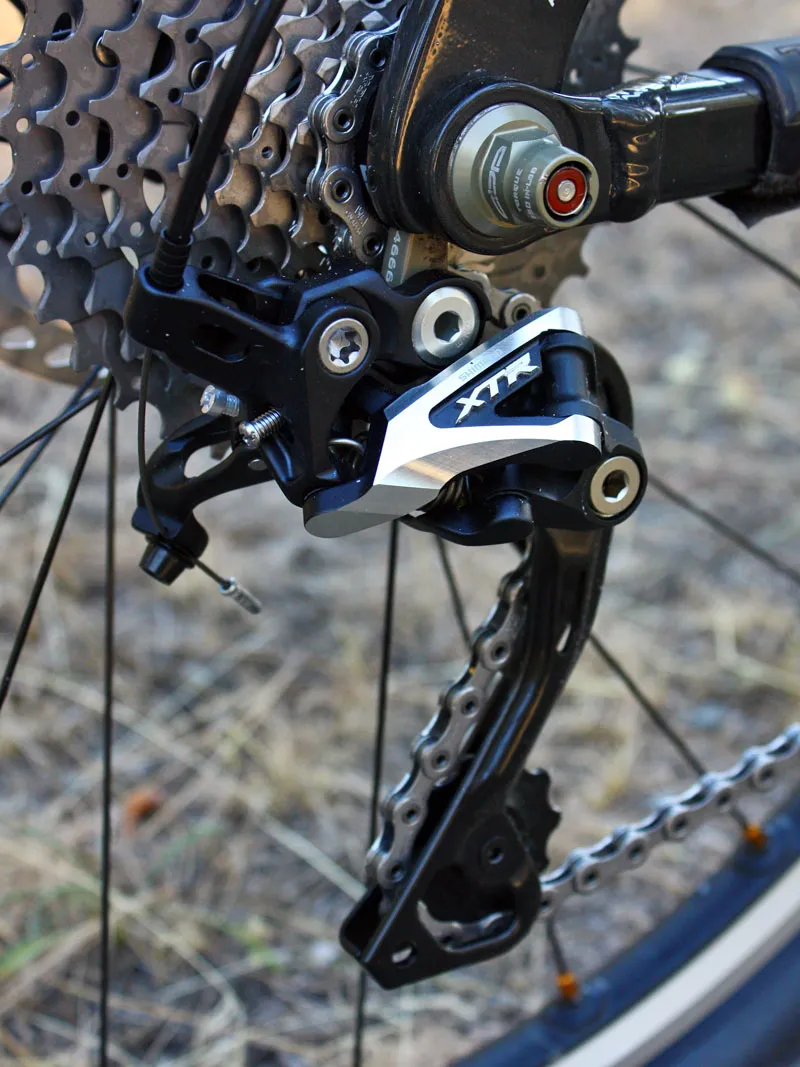
Shimano will offer XTR M980 rear derailleurs in the low-profile Shadow configuration only
Front shifts in either direction are more refined, too, with the improvements again being most noticeable under full power. We can't say for certain whether credit goes to the tighter 42/32/24T chainring spacing of our three-ring test setup, the revised front derailleur cage shaping or the new hyper-engineered directional chain (more on both in a bit), but no matter – if you thought M970 was good, be prepared for a pleasant surprise.
Shimano continue to stick to their 'Light Action' guns and lever effort has actually gone down relative to M970, but the detents have conversely grown stronger in both feel and volume so useful feedback has gone up. This change will be welcome during both longer events, where hand fatigue can be a concern, and in rougher terrain. Further adding to the lower effort is a longer pull lever (again, with a dimpled surface for less finger slipping). The stroke is comparable to M970.
Carrying over from M970 shifters are the same 2-Way Release, Multi-Release and Instant Release features, plus the laterally adjustable pod positioning. The pull lever still isn't adjustable like SRAM's XX or X0 but the stock position is quite agreeable so we didn't feel the need to move it anyway.
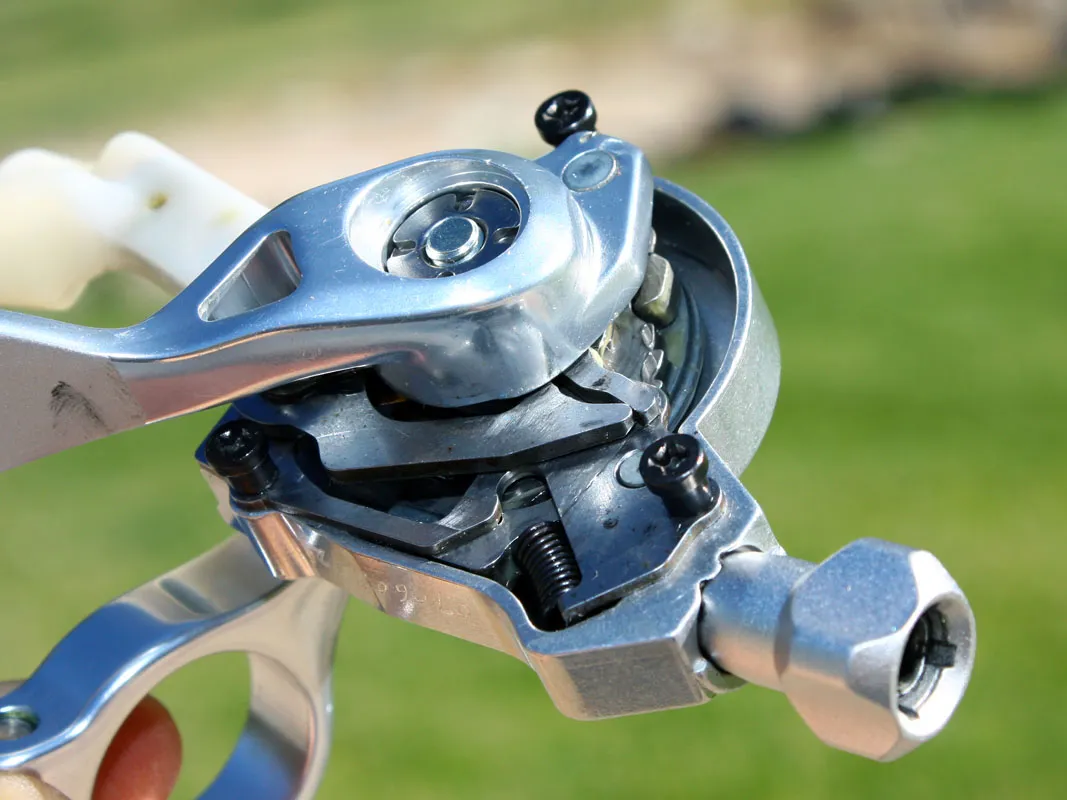
Lever effort is more consistent (and slightly lighter) with M980, with stronger clicks
Drivetrain: Further evolution of proven themes
XTR's M980 hollow-forged aluminium crankarms ditch M970's press-fit non-driveside arm and threaded bearing preload adjuster in favour of a simpler pinch bolt setup similar to that used in the rest of Shimano's lineup. A few grams have been shaved, too, but otherwise the changes are mostly cosmetic and include the new highly polished two-tone finish and visually swirled chainring spider (BCD on the triple remains the same, though).
As before, the outer ring boasts a deep profile for fantastic rigidity (which manifests in better shift quality and fewer bent chainrings) and the middle ring is a titanium-and-carbon composite hybrid that's nearly as light as a standard aluminium ring but much stiffer and longer-wearing. Aside from the extra cog, the new cassette is little changed from the previous generation, with five titanium cogs and five steel ones, and three separate alloy spider assemblies to keep flex at bay and save weight.
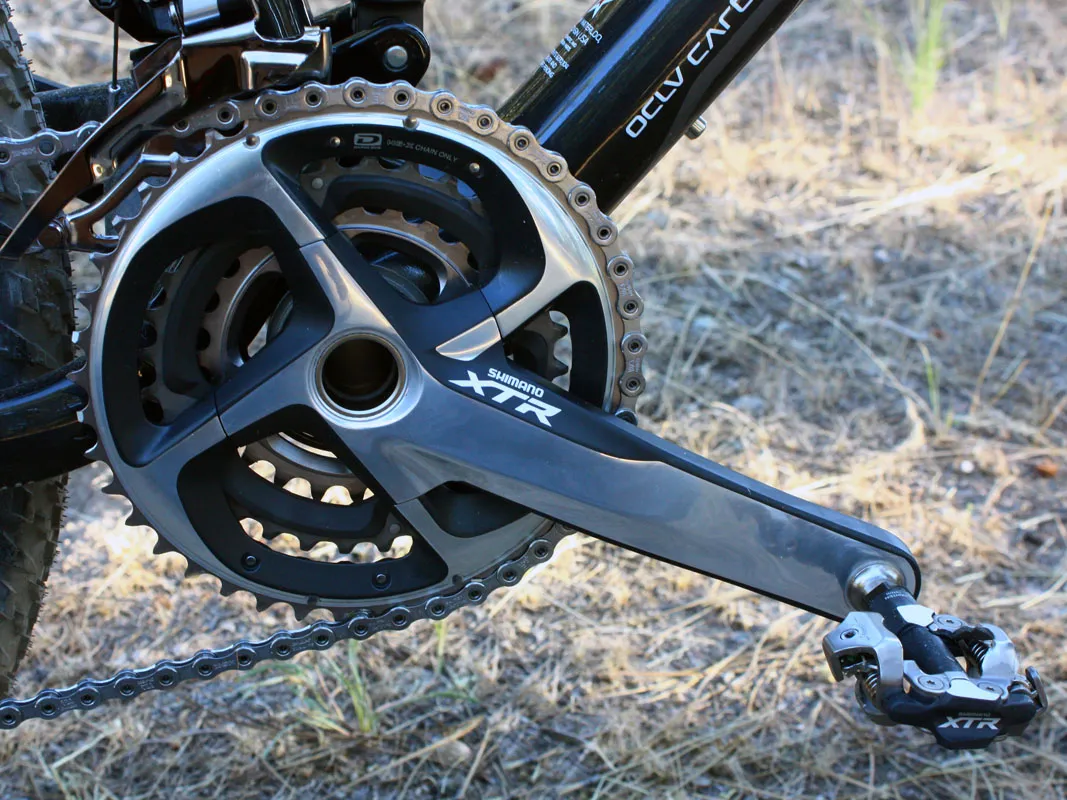
The combination of tight 'Dyna-Sys' chainring spacing and Shimano's new directional XTR chain makes for exceptionally smooth front shifts under power
XTR M980's new chain, however, is one of the most prominent examples of Shimano's considerable engineering prowess. As with its Dura-Ace cousin, XTR now boasts a directional design with specific inner, outer, non-driveside and driveside plates that are all specifically chamfered, carved and shaped for their particular purpose – the inner plates for climbing up the cassette cogs and the outer plates for clawing up progressively bigger chainrings.
In addition, the tolerances between the plates and rollers have been tightened up while the inner sides of the outer chain plates have been relieved, which should make for reduced contamination in nasty conditions (and hopefully better lubricant retention) along with better mud shedding. While the dry test conditions didn't offer much of an opportunity to test the weatherproofing of the chain, we can definitely say that the additional outer chamfering makes for an impeccable quiet drivetrain.
Save for the extreme cross-gear combinations, XTR M980 is wonderfully silky smooth, and even violently knocking off a couple of teeth from our big ring could detract from it. Will it stay that way over time? We'll have to wait and see but initial impressions are favourable.
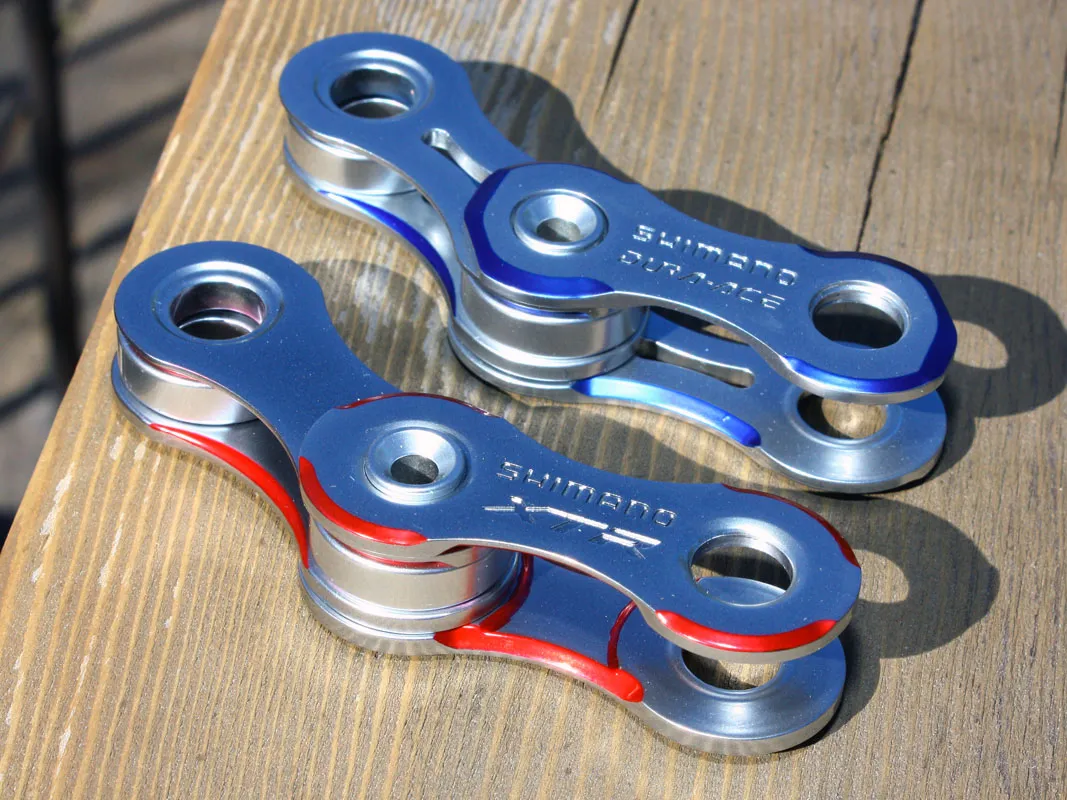
Dura-Ace and XTR M980 are both 10-speed systems but the chains see different loads and so are designed quite differently
The last major drivetrain improvement is with the new Trail and Race pedals, both of which boast wider axle bearing spacing, roughly 2mm-lower stack heights and wider platforms. The first two improvements are nice and all but it's the bigger platforms that are really noticeable underfoot, especially in the Race version.
Previous XTR pedals have always been rock-solid with consistent entry and exit, and incredibly durable internals, but the slight bit of yaw they allowed could sometimes lead to an unwanted exit in technical terrain. The new pedals' 4mm-wider platforms mostly put an end to that, and we felt much more secure.
For an even more surefooted feel, the Trail pedal adds an alloy mini-cage at the front and rear, and even more surface contact area directly on either side of the cleat. We wish Shimano would have included the extra surface area on the Race pedal, too, but it's an improvement nonetheless (and more adventurous buyers will undoubtedly end up taking a hacksaw and file to a set of Trail pedals to make their own).
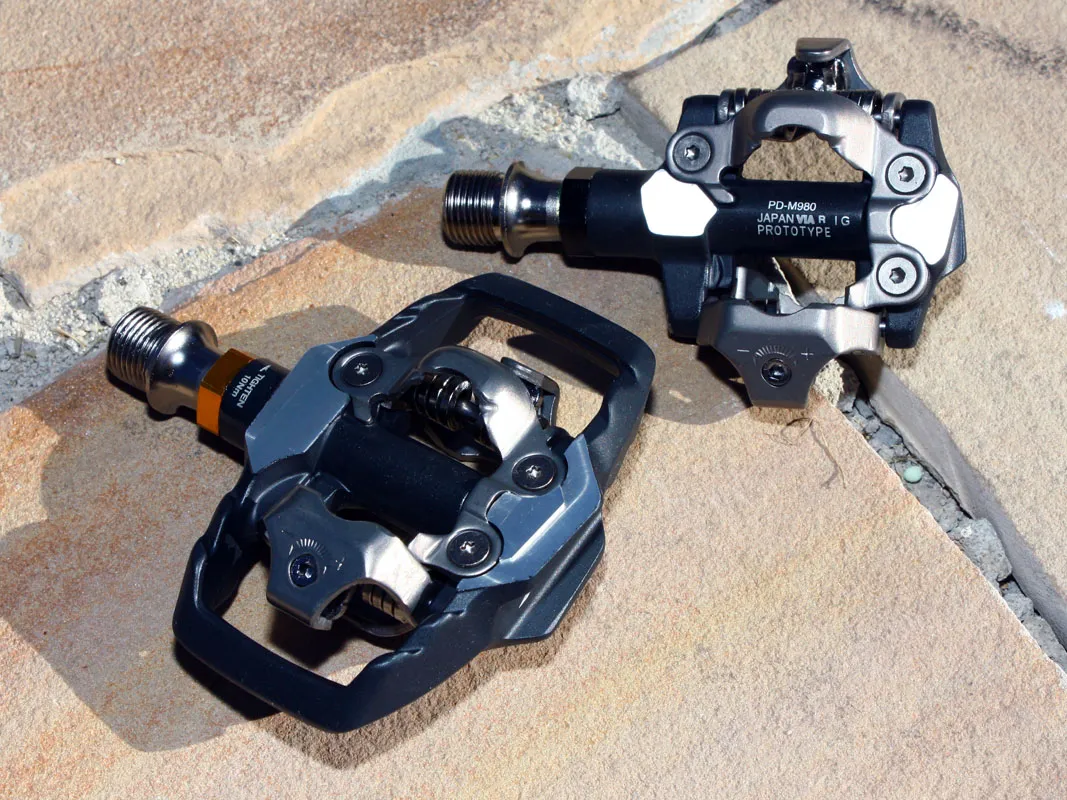
Claimed weight on the PD-M980 pedals (top) drops to 310g/pair. The Trail-edition PD-M985s are 90g heavier but feature an even bigger platform and alloy mini-cage
Wheels: More finely tuned Trail and Race options
Shimano have trimmed weight from the Race-edition XTR wheels for 2011, bringing them down under 1,500g for the first time courtesy of a more heavily machined scandium-enhanced alloy rim that's still true UST-compatible and built with the same brazed-on threaded nipple attachments and aggressively butted spokes as before.
The previous generation's faster-engaging titanium freehub body carries over, too, but there's now a 15mm through-axle fitment option up front for those who want a bit more steering precision. We didn't have a chance to ride the Race wheels but the new Trail wheels certainly seem interesting for riders who are less concerned about weight.
The Trail wheels are decidedly less svelte at a claimed 1,670g for the pair but the 21mm-wide rims (internally; Race wheels measure 19mm) lend better tyre casing support for more stable cornering, especially when larger-volume treads are fitted at lower pressures. Slightly thicker spokes are used for better durability, and despite the ho-hum weight on paper, the wheels' impressive lateral and torsional stiffness help them feel lighter than they are. We had no issues whatsoever instantly inflating our tubeless-ready WTB test tyres with just a standard floor pump.

New with M980 are specific Race and Trail wheelsets. The Race version slims down to 1,480g/pair while the Trail edition jumps up to 1,670g but has a wider rim and slightly thicker spokes
Further thoughts on Shimano's Dyna-Sys drivetrain philosophy
Rather than push a three-ring or two-ring drivetrain for M980, Shimano have instead chosen to give customers a plethora of options, including a tighter-range 24/32/44T, three race-oriented double options (28/40T, 30/42T, and 32/44T) – all with a narrower pedal stance width – and even a more trail oriented 26/38T double that 29er aficionados will likely gravitate towards.
We only tried the standard triple out in California but after spending lots of time on SRAM's two-ring setups, it's still somewhat of a toss-up which is better suited for the majority of riders. While we love the simplification that wide-range two-ring setups offer, there's no ignoring the fact that the standard 32T ring is still the 'money' gear – and even more so now with the addition of the 36T cog.
That being said, not all of the gear combinations with Shimano's standard triple are as usable as on a chainline-corrected double, either, and even mildly crossed gear combos are still a little rougher than on a double despite the new chain. So which is for you? That'll likely depend on your level of fitness and the range of terrain you're likely to encounter. Either way, we commend Shimano's decision not to make that choice for you – pick your poison.

The new XTR provides a choice of nine different front derailleurs to suit all types of rider
Notes on durability
Two days of riding is hardly enough time for a proper torture test (that'll come later) though we will say that the challenging terrain of the Sierra Buttes region condenses a lot of abuse into a short period of time – and needless to say, our brand-new test bits definitely no longer look brand-new.
Rocks have left deep scratches on the crankarm ends and sides, and as already mentioned, we sheared two teeth off the big ring after an especially hard smack into a rock – yet neither the ring nor spider bent and we were still able to use the ring.
The Shadow-only low-profile rear derailleur is a welcome feature, as it tucks the body further in towards the frame and away from rocks, and the more upright cable positioning relative to SRAM should make for fewer shattered housing sections. We do wish Shimano had stuck with an alloy pulley cage, though, as it still hangs precariously below and near to the ground and one rider in our group managed to shear off a carbon ply or two.
Lastly, that gleaming crankarm finish looks great in person but persistent heel rubbers will make short work of the sheen – make sure to slap some protective film on there first.

By the end of our initial two-day test, our crankarms no longer looked this pristine
Welcome back, Shimano
Shimano's engineering talent and attention to seemingly insignificant minutiae make themselves very obviously known on the new XTR as it's not only incredibly functional but remarkably refined – SRAM XX may have it beaten in some aspects but simply put, XTR feels like a more finished and polished end package.
In addition, while the new Trail and Race options tightly focus on particular user groups, the interchangeability between the two allows mixing and matching to suit your personal needs. Whereas older XTR groups were always impressive but presented some obvious flaws, this latest version is as close to perfection as Shimano have ever managed to achieve.
Sure, there are still some quirks and niggles but they're more minor than ever and when all is said and done, it's hard to fault the performance of XTR M980 on the trail. Time will tell how well this stuff will hold up in the long-run but one thing's certain: we're back to a two-horse race, folks, and as of right now there's no odds-on favorite.
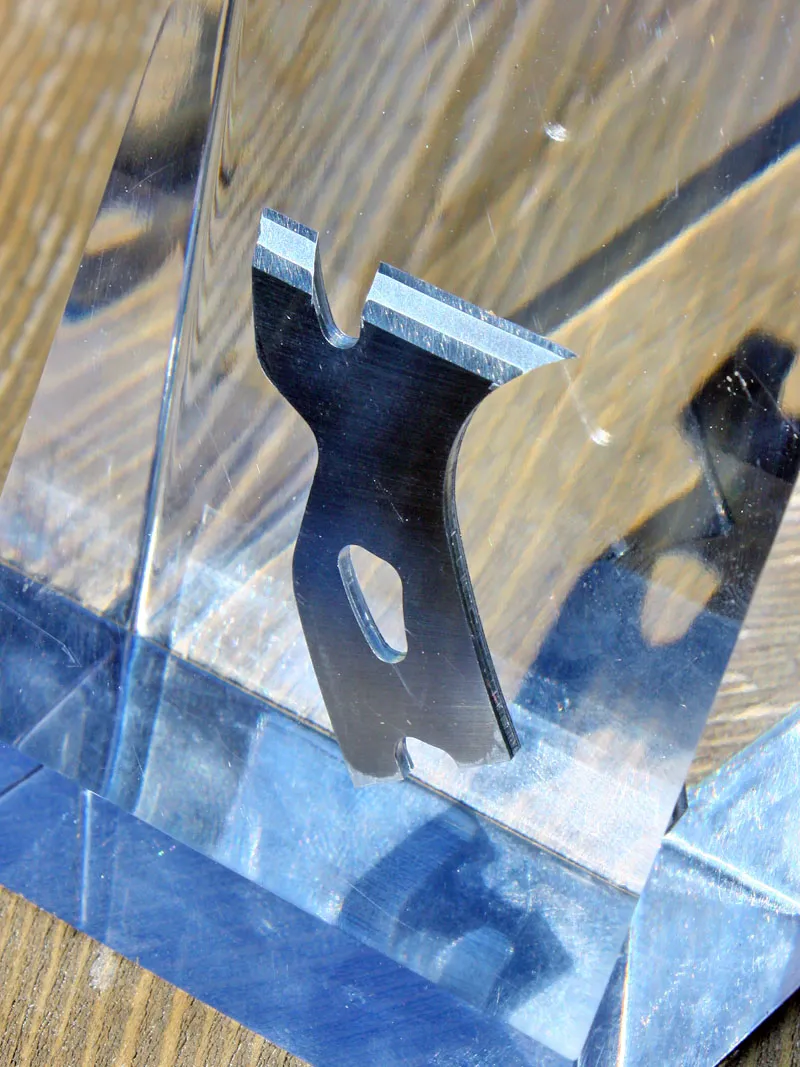
The three-layer Ice Tech rotors feature an aluminium core to better dissipate heat
